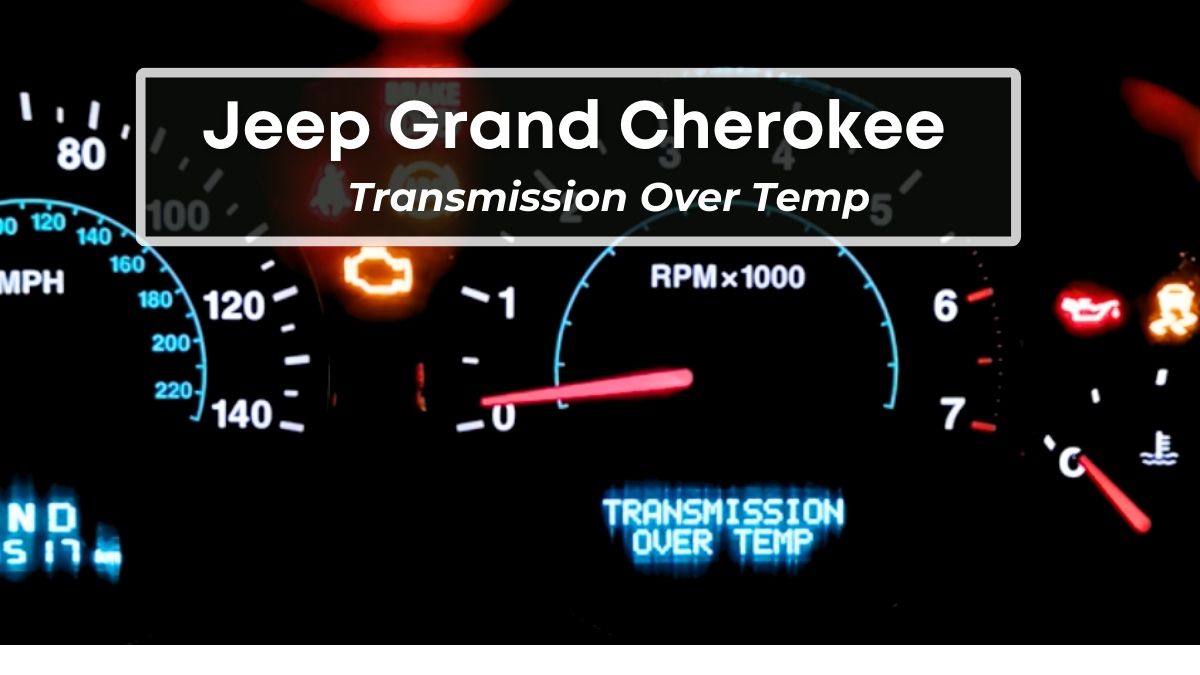The “transmission over temp” is one of the most common error messages in Jeep Grand Cherokees – particularly in 2005-2007 models.
TL;DR
In theory, this message means the transmission is overheated – primarily due to low transmission fluid, faulty transmission cooler, clogged transmission cooler lines, or faulty transmission control module.
And that you should fix these issues to cool down the temperature.
In reality, though, many Jeep owners have reported this error to appear erroneously even when their vehicles have none of the issues mentioned above.
This article will discuss the leading causes behind this error and how you can fix them.
What Should Be The Transmission Temperature In Jeep Grand Cherokee?
The ‘normal’ temperature range for the Jeep Grand Cherokee transmission will depend on transmission fluid age, driving conditions, and ambient temperature.
Generally, it’s good if the temperature is 160°F-190°F while driving on regular roads. I get 175°F on mine after driving 30 minutes within the city.
Similarly, the temperature can touch the 210°F-220°F mark temporarily if you’re off-roading, snow plowing, or in heavy stop-and-go traffic. It should automatically come down again when you go back to regular driving.
On the other hand, if it’s consistently over 230°F or at 250°F when towing, it can cause damage to the transmission.
What Causes ‘Transmission Over Temp’ Message in Jeep Grand Cherokee?
Below are some common causes behind the ‘Transmission Over Temp’ message on your dash screen.
1. Low Transmission Fluid
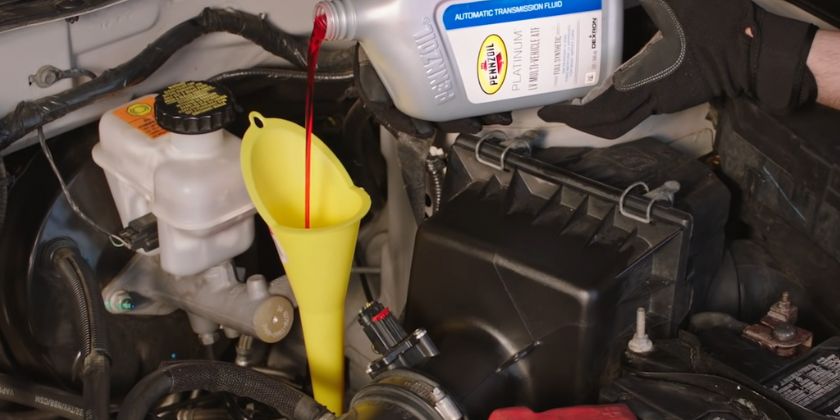
The transmission fluid is a multi-purpose liquid that lubricates the transmission’s parts, cleans the transmission from dirt, metal shavings, or other contaminants, and acts as a coolant to prevent excessive heat buildup.
If this fluid goes low (leaking, heavy workloads, aging, etc.), the transmission will overheat due to increased friction between its internal parts. This issue is particularly common in the 2005 Grand Cherokees.
2. Faulty Transmission Thermostat
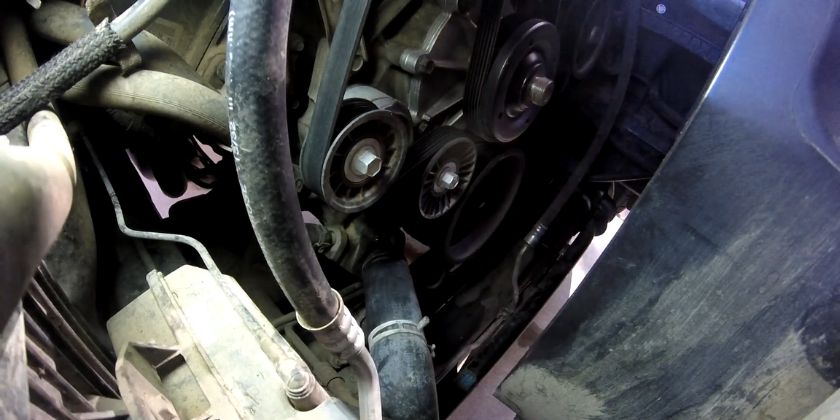
Some Grand Cherokee models come with a thermostat to regulate the flow of transmission fluid and control the temperature inside the transmission.
Therefore, if this thermostat is not working, it cannot control the fluid, which would cause the transmission to overheat.
3. Faulty Starter Solenoid
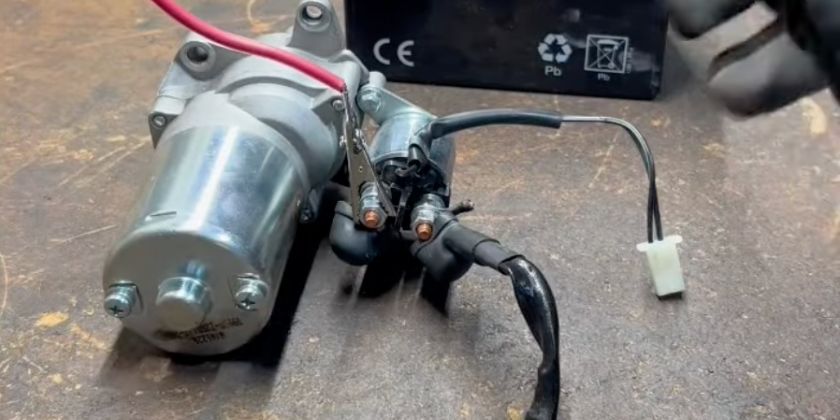
If your transmission is not overheating, but the ‘Transmission Over Temp’ still appears, you should check the starter solenoid. It is a component that engages the starter motor with the flywheel to start the engine.
If this solenoid doesn’t work, the engine will stall or not start. In such a case, multiple attempts to start the engine will cause the transmission fluid to overheat (due to excessive idling), and you’ll get that ‘Transmission Over Temp’ message.
This issue is tricky to identify, as the starter solenoid can malfunction for many reasons.
In my experience, many Jeep Grand Cherokee 2007 models have their starter solenoid’s positive lead wire connection corrode or lose over time.
The poor connection, in turn, would cause the voltage to drop, and the starter motor would not get enough power to engage the flywheel. As a result, the engine wouldn’t start.
Therefore, if your Jeep Grand Cherokee is not starting and you’re getting the overheating transmission message instead, the starter solenoid is a good area to start the diagnosis.
4. Clogged Transmission Cooler
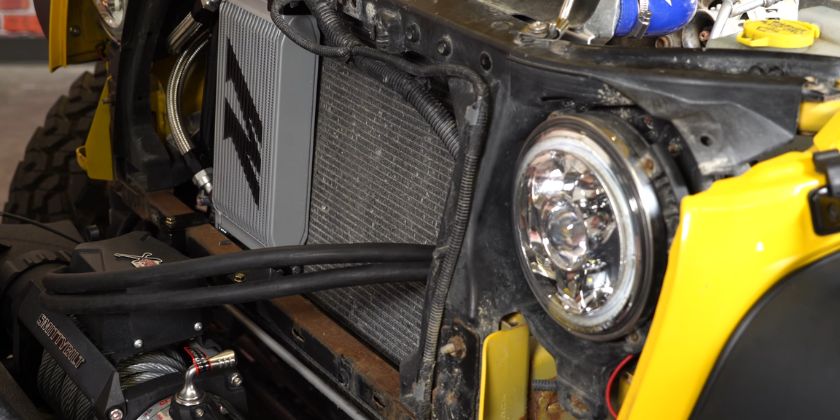
Many newer Jeep models come with a stock transmission cooler designed to dissipate the heat from the transmission.
With continuous usage, this radiator can get clogged with debris or dirt, obstructing the transmission fluid flowing through it. This obstruction can cause the fluid to remain hot and the transmission to overheat.
5. Warm Climate
Warm temperatures can cause the transmission fluid to overheat quickly – especially under heavier workloads or in stop-and-go traffic. The overheated fluid, in turn, causes the transmission itself to get overheated.
6. Faulty Transmission Temperature Sensor
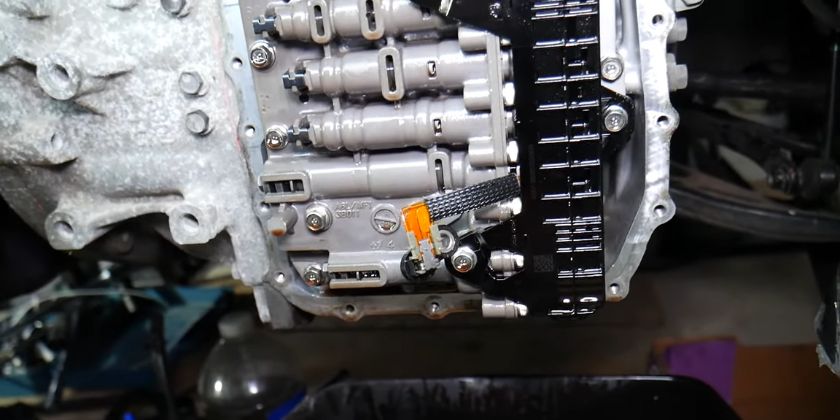
The transmission temperature sensor is a component that monitors the temperature inside the transmission and sends that info to the PCM.
This sensor can malfunction to send incorrect info to the PCM. It can result in an erroneous warning message. If your transmission temperature is stable but still getting this message, sensor malfunctioning can be one of the reasons.
How to Fix Transmission Over Temp in Jeep Grand Cherokee?
1. Add The Transmission Fluid
Since low transmission fluid is a common reason for an overheating transmission, the first solution you can try is adding more fluid.
Here’s how you can do it:
- Engage the parking brake. It will allow the vehicle to remain stationary while you’re checking the fluid.
- Start the vehicle and put it in idle mode for some minutes so the fluid can get a little warm.
- Locate the transmission dipstick. It can be found in your engine compartment and will have a yellow handle.
- Pull out the dipstick and wipe it clean with a cloth or towel.
- Reinsert the dipstick back entirely and then pull it out again.
- Now, examine the dipstick. It will have markings or lines to denote the minimum and maximum levels of the fluid.
- You’re good to go if the fluid is between these two levels.
- But if it’s below the minimum, add more fluid in small quantities and check if it reaches the optimal level.
- Since extra fluid can also harm the transmission, stay below the maximum level.
- Reinsert the dipstick back into its slot and ensure it’s properly sealed.
You’ll also need to check the fluid’s color and smell. A good-quality transmission fluid should have a pink/bright red color.
On the other hand, a brown/dark color or a burnt smell means the fluid is contaminated and should be replaced before you put the new one.
2. Replace The Transmission Fluid
As stated above, adding more fluid will not cool down the temperature if the existing fluid is contaminated.
In such a case, you should flush the older transmission fluid out before adding any new one.
Here’s a basic outline of this process:
- Lift the vehicle to access the transmission and drain pan.
- Disconnect the drain plug and allow the fluid to exit the car. Place a drain pan underneath.
- Remove the transmission filter with a wrench/socket.
- Add a new transmission filter.
- Refill the transmission fluid.
- Check the transmission fluid level.
For more information, you can check out this video:
3. Use An Aftermarket Cooler
Another fix you can try is to install an aftermarket cooler to your transmission. Although many WK models have a stock cooler, you can upgrade to a 3rd-party option for better results.
The hot transmission fluid from transmission flows through this cooler and transfers its heat to the cooler’s metal fins/tubes. This heat dissipates into the air, which results in the fluid cooling down.
The cooled fluid goes back into the transmission and repeats the above process.
The main benefit of a transmission cooler is that it prevents the transmission fluid from overheating, which is the most significant cause of transmission overheating.
4. Fix the Starter Solenoid
The two main problems that indirectly cause transmission overheating are the positive lead wire to the starter solenoid and the wire attached to the metal tab in front of the starter.
We’ll have to solve both of these issues.
Drop the skid plate first and locate the starter underneath. You’ll see a yellow wire attached to the solenoid.
Disconnect that cable and clean the connection if it’s corroded. If not, simply tighten the spade clip with pliers to secure that connection. You can also add dielectric grease to prevent corrosion in the future.
After that, access that metal tab located near the steering column. Disconnect the wire connection from that tab and clean it to remove corrosion. Then, connect the wire again.
Final Words
So, these were some of the fixes for the ‘transmission over temp’ warning message.
If you’ve followed these methods but still getting that error, it can be due to a bad thermostat or PCM. And you should go to a dealership to fix them as they’re too technical for DIY.
Frequently Asked Questions:
What Does Transmission Over Temp Mean?
It means that the transmission temperature is higher than the normal range. And you should fix the underlying issue to avoid any permanent damage to the transmission.
What Happens if My Transmission Temp Is Too High?
A high transmission temperature for a prolonged period can cause wear and tear on the transmission parts, transmission slipping, or even a complete transmission failure.
Can a Clogged Transmission Filter Cause Overheating?
If a transmission filter is clogged, the transmission fluid cannot flow through it properly to maintain the temperature. This, in turn, would cause the transmission to overheat.
Can I Drive With The Transmission Temp Light On?
In many cases, you can drive the transmission warning light on. That being said, you should get it checked, as this warning light indicates some fault in your vehicle transmission. And the more you delay, the more it can cost you in the repair job.
What are The Common Signs of Transmission Overheating in Jeep Grand Cherokee?
Some common signs of transmission overheating are a burning odor from the transmission, transmission slipping, fluid leaking from transmission seals and gaskets, and delayed engagement.
How do You Cool Down Transmission Fast?
You should stop the vehicle and run the engine at idle with the neutral transmission. That’s because the transmission disengages from the engine when you shift into neutral, which reduces the load and decreases the transmission fluid temperature. And running the engine at idle or higher speeds helps increase airflow over the transmission and dissipates the heat.

